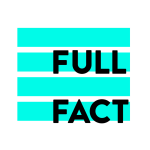Stop wrestling with blank cursors—these templates will make AI your best collaborator
Last Tuesday at 2 AM, Sarah was staring at her laptop screen, defeated. She’d been trying to get AI to write compelling product descriptions for three hours. Her prompts were producing generic garbage that sounded like it was written by a robot having an existential crisis.
Sound familiar?
Here’s what nobody tells you about AI: it’s not actually mind-reading technology. Shocking, I know. We’ve all been there—typing “make this better” into ChatGPT like we’re casting a magic spell, then getting back something that technically qualifies as words but somehow manages to miss the mark entirely.
But here’s the plot twist that changes everything: there are actual formulas. Real, tested templates that transform AI from your most frustrating coworker into your secret weapon. These aren’t just random frameworks someone invented during a lunch break—they’re battle-tested blueprints that consistently produce the kind of results that make you look like a genius.
Think of it like this: you wouldn’t build IKEA furniture without the instruction manual (okay, maybe you would, but you’d regret it). So why are you trying to build brilliant AI outputs without a blueprint?
Whether you’re trying to craft the next viral blog post, debug code that’s making you question your life choices, or research topics so complex they give you a headache just thinking about them, these templates are about to become your new best friends.
The Creative Writing Formula: SPARK
For fiction writers, screenwriters, and anyone crafting narrative content, the SPARK framework turns blank pages into compelling stories faster than you can say “writer’s block.”
S – Setting (Where and when?)
P – Protagonist (Who’s the main character?)
A – Action/Conflict (What’s the central problem?)
R – Relationships (Who else matters?)
K – Key outcome (What should happen?)
Copy This Template: “Write a [genre] story set in [setting] featuring a [character description] who must [central conflict/goal]. Include [specific relationships or supporting characters]. The story should [desired outcome/theme]. Write in [tone/style] and aim for [length].”
Example in Action: “Write a sci-fi thriller set in underwater New York in 2087 featuring a marine biologist who must stop genetically modified sharks from destroying the last human colony. Include her estranged sister who leads the shark research team. The story should explore themes of family loyalty vs. survival. Write in a fast-paced, cinematic style and aim for 2,000 words.”
The Coding Conqueror: DEBUG
Recent research shows that advanced prompt frameworks like Chain-of-Thought prompting have become essential for complex problem-solving tasks, especially in programming where logical reasoning is crucial.
D – Define the problem clearly
E – Environment/language specifications
B – Behavior you want to achieve
U – Use cases and examples
G – Guidelines and constraints
Copy This Template: “I need help with [specific programming problem] in [language/framework]. The code should [desired behavior]. Here’s what I’m working with: [current code/context]. I need it to [specific requirements]. Please provide [solution type] with comments explaining the logic.”
Example in Action: “I need help optimizing a Python function that processes large CSV files. The code should read files faster than 10 seconds for 1GB+ files. Here’s my current function: [paste code]. I need it to handle memory efficiently and work with pandas. Please provide a refactored solution with comments explaining the performance improvements.”
The Research Rockstar: TRACE
The TRACE framework provides a clear and actionable prompt for structured research tasks, making it perfect for academic work, market research, or deep-dive investigations.
T – Topic (What’s the subject?)
R – Requirements (What format/depth?)
A – Audience (Who’s this for?)
C – Context (Why is this needed?)
E – Examples (What should it look like?)
Copy This Template: “Research [specific topic] for [target audience]. I need [type of output] that covers [specific areas/questions]. This research will be used for [context/purpose]. Please include [specific requirements like sources, length, format]. Structure it similar to [example or style guide].”
Example in Action: “Research sustainable packaging alternatives for e-commerce businesses targeting environmentally conscious millennials. I need a comprehensive report that covers cost analysis, implementation challenges, and consumer perception data. This research will inform our company’s packaging strategy for 2025. Please include recent studies, cost breakdowns, and real-world case studies. Structure it as an executive summary with actionable recommendations.”
The Business Builder: SMART-C
For business prompts, marketing copy, and professional content, this enhanced SMART framework gets results that actually move the needle.
S – Specific goal
M – Measurable outcome
A – Audience definition
R – Resources/constraints
T – Timeline
C – Call to action
Copy This Template: “Create [specific business content] designed to [measurable goal] for [target audience]. Working with [available resources/constraints] and needed by [timeline]. The content should motivate readers to [specific call to action]. Include [tone/style requirements].”
Example in Action: “Create email marketing copy designed to increase click-through rates by 15% for SaaS customers who haven’t logged in for 30+ days. Working with a two-email sequence and needed by Friday. The content should motivate readers to schedule a product demo. Include a friendly but urgent tone with personalization options.”
The Analysis Ace: DEEP
For data analysis, problem-solving, and complex explanations, DEEP helps you get thorough, actionable insights.
D – Data/information provided
E – Expected analysis type
E – Expertise level needed
P – Presentation format
Copy This Template: “Analyze this [type of data/information]: [paste or describe data]. I need [type of analysis] explained at a [expertise level] level. Present the findings as [format preference] with [specific requirements like visualizations, recommendations, etc.].”
When You’re Not Sure Which Template to Use
Sometimes you need AI to help you figure out what you need. According to recent guidance, successful prompts begin with natural language and focus on four main components: persona, task, context, and format.
Copy This Template: “I’m working on [general area/project] and need help with [vague description of what you want]. My goal is [end result you’re hoping for]. Can you suggest the best approach and ask me clarifying questions to create a more effective prompt?”
Why These Templates Actually Work
These frameworks work because they force you to think like AI thinks—in structured, logical patterns. Template-based approaches like the LangGPT framework have gained significant recognition because they achieve systematization by providing structured methods where users only need to fill in corresponding content.
Each template addresses the most common prompt failures: vague requests, missing context, unclear expectations, and lack of specific requirements. They turn your brain dump into AI-friendly instructions.
Remember, these are starting points, not rigid rules. Mix and match elements, adapt them to your needs, and don’t be afraid to iterate. The best prompts are conversations, not commands.
Your AI is incredibly capable—it just needs you to speak its language. With these templates in your toolkit, you’re not just prompting anymore. You’re orchestrating.
So go ahead, copy these templates, make them your own, and watch your AI interactions transform from frustrating guesswork into reliable, remarkable results. Your future self will thank you for it.
References
ButterCMS. (n.d.). 11 must-know ChatGPT prompt frameworks for marketers. ButterCMS Blog. https://buttercms.com/blog/chatgpt-prompt-frameworks/
EncodeDots. (2025, June 4). Prompt frameworks 2025 explained: What works and why. EncodeDots Blog. https://www.encodedots.com/blog/prompt-frameworks-2025/
Jiang, Y. Z. (2025, January 13). 2025 complete guide to prompt frameworks: 18 practical frameworks to boost your AI conversation efficiency by 10x. AI WorkFlow Studio. https://aiworkflowstudio.com/prompt-framework-guide-2025/
New York Institute of Technology. (n.d.). Prompt frameworks – Prompt engineering for academic research. LibGuides. https://libguides.nyit.edu/promptengineering/promptframeworks
PPC Land. (2025, January 25). How to write effective prompts in 2025. PPC Land. https://ppc.land/how-to-write-effective-prompts-in-2025/
Prompting Guide. (n.d.). Examples of prompts. Prompt Engineering Guide. https://www.promptingguide.ai/introduction/examples
Semrush. (2025, March 20). 234 ChatGPT prompts (& how to write your own). Semrush Blog. https://www.semrush.com/blog/chatgpt-prompts/
Steal These Thoughts. (2025, February 26). The best AI prompt framework for work (2025). Steal These Thoughts. https://stealthesethoughts.com/2024/07/29/the-best-ai-prompt-frameworks-for-business-2024/
XpertPrompt. (2024, August 20). 9 prompt engineering frameworks that will make you an expert prompt engineer. XpertPrompt. https://xpertprompt.com/2024/04/07/prompt-engineering-frameworks/



